Allison is a nutritional medicine student in Australia whose story illustrates many of our favorite themes – the importance of a healthy ancestral diet and good nourishment; the significance of infections in disease; the value of diagnostic profiling such as stool tests; and the potential value of antibiotics and fecal transplants as therapies for diseases not normally considered to be infectious. Most of all, she shows that in chronic disease, there is always ground for hope. Here’s Allison! – Paul
When you are convinced that it is raining inside of a bus, sensing the rain drops on your skin, you know that something is very wrong. That was my experience after collapsing at work in London in July 2008, where I had moved in 2007 for the working holiday that’s so much a part of the Australian experience for many young people. After working too hard in my job, I’d picked up a virus which started off as a sore throat and then suddenly escalated to much more. I tried going back to work after two weeks at home resting, but it was to no avail. I had no energy, had trouble standing upright and was so spacey, I felt like I was on another planet – or not on any planet at all.
I’m now writing this from the safety of the other side of what can only be described as a personal hell on Earth. Four years on from that virus, and about ten years after I first started to experience post-viral fatigue episodes, I have finally been given the gift of answers as to what has wreaked so much havoc on my life. I feel incredibly lucky after all this time that the universe has given me answers, when so many people I care about in the online health groups I frequent, don’t seem to be so fortunate. I’m not particularly religious, but getting answers is akin to a miracle.
I’ll backtrack a little to 1999 at age 22 when I had a bout of glandular fever (known as “mono” in the US). I’d watched my elder brother deal with chronic fatigue syndrome in the late 1980s and knew just how bad it could be. It took me about 6 weeks to recover, but I don’t think my health was ever really the same. As a young girl, I was very sporty and academic. But as I got older and I experienced these viruses (to this day I don’t know exactly what virus they were), I was not the same healthy person. I always felt much more tired than other people and was prone to depression, stress intolerance and self-loathing. In the early 2000s, I was able to work full time and had a pretty good social life but I had odd reactions to straightforward procedures like wisdom tooth removal, root canal and vaccinations. Those dental procedures left me feeling flu-like for weeks and the Hepatitis B vaccination needed for overseas travel left me with a large grey patch of raised skin on my inner thigh. In 2006, things started unravelling for me. After a bad relationship breakup, I picked up yet another virus and felt very dizzy and spaced out. I quickly developed severe muscle weakness and could hardly get out of bed. After about 6 weeks, I returned to work but experienced excruciating headaches and a sudden bout of claustrophobia on a train while commuting to work. In early 2007, I had a repeat of the very same thing for the same length of time. Mum would drive me to the beach for some sea air and I struggled to get my leg muscles to work so I could simply walk on the sand. When I returned to work, I resigned as it was quite a negative environment anyway – except for some of the lovely people I had the pleasure to work with. I was determined that my plans to move to London for a working holiday in mid-2007 would still hold. After “recovering” from that latest bout of post-viral fatigue, I found a contract job so I could save money for my big adventure. The only problem was that at that new job, I developed severe anxiety which left me paralysed at work and wanting to flee – almost all day, every day. My stress tolerance was non-existent. I didn’t seek help at all for the anxiety, I wish I had. Somehow, I managed to make it to the end of that contract and felt proud of myself for getting to the end of it and leaving the project in a pretty decent state for handover. With that, I took off for London.
In London, things were great for the most part but I still had anxiety at work, poor stress tolerance and was pushing myself too hard at work in a less than ideal physical environment – think cramped working conditions with not much fresh air and no air-conditioning. Welcome to modern London! I made it to December 2007 and planned a trip home to escape the London winter, but I developed a serious flu which finally subsided after several weeks but not without making me feel awful and scaring the life out of me. I did well when I was back home for three months and then returned to London again. I only lasted a couple of months before that sore throat I mentioned showed up and kicked off a whole lot of problems.
Literally overnight, I developed about thirty upsetting symptoms that were so bizarre I just couldn’t wrap my head around them. This was not the usual virus and post-viral fatigue episodes I had experienced. It was different. The worst symptoms were:
- Severe thyroid pain that alternated between stabbing sensations and a vague feeling of pressure
- Hot and cold body temperature fluctuations, so much so that on a 23C day in London, I could only relieve my body heat by taking a cold bath for half an hour
- Intense muscle aching around my shoulder and neck region that was only partially helped by holding a bottle of frozen drink to the area
- I needed to urinate every half hour and every hour overnight – that was quite unpleasant!
- Constant crying at the drop of a hat. I would call my parents back home in Australia every day and cry. I also saw a couple of health practitioners when I was there (some were doctors, some were “alternative” practitioners such as a naturopath) and I would just constantly cry. Obviously, I was really afraid of what was happening to me, but the crying was excessive
- I had disturbing thoughts, usually at night time, such as thinking I wanted to jump out of the window of my fifth floor apartment. I also had that very odd experience of rain inside the bus
- The apartment building also had no lifts, so getting back up to the apartment was a real test of my will, since my legs had stopped functioning
- I was very dizzy and mentally spaced out
- Alcohol tolerance was non-existent. During this period, it was my birthday and one of my dear new London friends took me out and I felt so drunk on just a few sips of cider.
The doctors that I consulted during this period were not all that helpful. One was very blunt and told me I had chronic fatigue syndrome and to come back in two months for assessment for a hospital in-patient program. A neurologist I had seen in Sydney in 2007 about my excruciating headaches concluded that since an MRI showed no abnormalities, that my problems were all psychological and I should get myself some Vitamin Z, medico slang for Prozac. He also prescribed Endep for the headaches which didn’t help. Of course, being a crying mess out of frustration and fear from all of these post-viral episodes will typically make a doctor assume the whole thing has a psychological basis.
After two months of no improvement, I had to make the difficult decision to come home to Australia as it represented the best chance I would have to recover, surrounded by supportive family, friends and an environment more conducive to healing. Sorry London, but sunshine and clean air are a necessity for me! I felt like a failure but I knew it was the best choice I could make. I naively assumed I would be back in London in no time at all.
On the flight back home, I couldn’t access the sea salt I’d put in my bag that had successfully resolved the excess urination problem, so that meant I was visiting the plane bathroom every half an hour for almost the entire trip. I wonder what the passengers next to me thought! I got back home to Australia and remember feeling very, very spacey, cold and out of it. I was very relieved to be back home though without the pressures of paying for rent and looking after myself. My Mum to this day has no idea how I made it home on my own and I don’t either. I guess I was just on auto-pilot, desperate to get back home to start healing.
I had pinned all of my problems on thyroid and adrenal issues – this turned out to be partly true, but these were more symptoms of an underlying problem than an actual cause itself. It took me a while to figure that out, which unfortunately was time I could have been treating the foundations with diet and targeted supplementation. I was unable to convince any endocrinologists I’d seen that I had a thyroid problem. All the testing I had (hormone levels plus antibodies) was “normal”, though an ultrasound showed decreased vascularity. They had no explanation for the thyroid pain I had, which incidentally disappeared once I started taking selenium in London. I was diagnosed by a holistic GP with hypothyroidism based on symptoms and started on T4-containing thyroid medication. Every attempt at any medication with T4 in it, synthetic or dessicated porcine thyroid, was a disaster leaving me even worse than off the medication. I’ve been on T3-only medication for a couple of years now and do quite well on it. I was also diagnosed in 2009 with a significant imbalance between levels of zinc and copper but I didn’t understand the implications of that, nor that I’d need to monitor it for life, so I took the supplements prescribed by a GP (general practitioner – the Australian equivalent of an MD) for only three months and gave up.
In late 2009, on Christmas Eve, I was driving back home after visiting a friend and I suddenly had an overwhelming sensation of intense fear wash over me and I thought to myself “I can’t remember how to drive, I have to stop the car and get out”. Time stood still and I desperately wanted to get out of the car and lie down on the median strip. I luckily made it back home but collapsed in a pool of adrenalin. That was the start of the most intense panic attacks you can imagine, something far worse than the anxiety I’d experienced before. I couldn’t drive because the panic was so intense and then the panic was occurring almost all the time – when I was a passenger in a car, on a train, on a bus, riding an escalator in a store, even going for walks in my beloved local park on the bay. I would get a sensation of primal fear and then think I wouldn’t be able to get home safely. Panic attacks were sometimes like a sudden powerful punch to the chest – at other times like a slowly rising tsunami. Home became my safe haven, but I even developed panic attacks at home. I would dread having to leave the house and cry because I hated that this had become my life. If it wasn’t bad enough having the physical symptoms I’d dealt with for years, the panic attacks almost did me in. I could feel agoraphobia approaching quickly and I knew without any doubt that I did not want this to be my life.
Skip to 2011 and things were so bad that I felt at breaking point. I couldn’t see a way out. I was having not just panic attacks but very intrusive thoughts of jumping in front of trains. I was despairing but not suicidal, so these thoughts scared me greatly and I felt I couldn’t trust myself. It made doing normal things that people take for granted almost impossible. I somehow managed to get by with family support, learning mindfulness techniques and breathing exercises. I tried neurofeedback for many sessions and sometimes felt an improvement only to regress again. I was trying to work during this period but it was just not manageable, my sleep quality was at an all time low and I would go to work in a daze, just waiting for the panic attacks to come which they did without fail every day. Having to commute home for an hour added to the problem – thinking about trying to catch the train home in peak hour was just torture. On one occasion, I had to run off a train as it was pulling in to a crowded station as I felt incredibly claustrophobic and fearful. I had somehow managed to complete a Masters Degree in 2010 but it was a struggle to sit in class with all of this going on. I would always sit near the door and didn’t contribute as much as I would have liked during class discussions. Often when I was a passenger in the car my Mum was driving, I would actually get out of the car at traffic lights while the car was stopped because I couldn’t handle being in the car stopped at lights as time stood still for an eternity – it was torture. Trying to rationalise just didn’t work – wherever this fear was coming from, it sure didn’t respond to rational self-talk.
A doctor that I started to see out of desperation in 2011 ordered a Bioscreen test to look at the gut levels of bacterial strains deemed by the researchers who established the lab to be significant in “mystery” ailments like chronic fatigue, behavioural and mental illnesses. Lo and behold, there were a lot of problems that came up on my results – extremely high levels of particular streptococcus strains and non-existent levels of many other bacterial strains considered essential. I had virtually no digestive symptoms at all though. My doctor didn’t really explain the significance of the streptococcus result as it pertains to mental health. I took a 12-day round of erythromycin, felt no different and left that by the wayside. Shortly after, I went to see another doctor that the neurofeedback practitioner worked with and the zinc:copper imbalance came up again and was confirmed as a likely contributor to many of my symptoms. I also had very low levels of B6 according to a Metametrix organic acids test. My dream recall was non-existent but returned with P5P and B6 supplementation, so I obviously really needed it. I also had an igG subclass deficiency which has now resolved with guided zinc supplementation. Working on the zinc:copper balance has made a big improvement to my health – my immune system is now much more resilient. I haven’t had a post-viral episode for about two years now. I also made the switch to a Paleo diet in early 2011 after getting frustrated with my lack of progress. That has given me a great foundation with which to repair my broken body.
But, I still had panic attacks and increasing agoraphobia which were preventing me from participating in life and making me despair. I was doing mindfulness and breath work, but they were really no match for it – they helped me cope but only just. Even the mirtazapine I had been taking, which at first was a godsend, had stopped being effective, so I knew I was in trouble. I stumbled on a blog from a fellow Australian called The Power of Poo when I was looking up some information for someone about histamine. In it, the author detailed the connection between streptococcus and mental health. That was a real lightbulb moment. I took this as a sign, so went back to the doctor who had prescribed the erythromycin and asked for two more rounds to see if it would make a difference. The side effects were awful – I felt like I’d been hit by a truck. But after a few weeks, the darkness enveloping me lifted and I felt so much more calm than I’d felt in a long time. I really couldn’t believe it.
Since then, I have re-tested the levels of gut bacteria and taken a few more rounds of erythromycin when I felt the panic attacks returning. I took that to be a sign that the streptococcus was still too high – that was confirmed with the re-testing which showed the streptococcus levels had reduced, but not nearly enough. I still have some episodes of anxiety, but they are nothing compared to the panic attacks I experienced. I am able to do things I had stopped doing – I’m now able to sit through an entire film in a cinema without leaving. I can leave the house without the thought of impending doom stopping me. I am slowly returning to driving but am taking things slow. I feel that the avoidance behaviours that took hold when the panic disorder was at its height need to be addressed somehow, so I try to do some informal exposure, though this isn’t easy when such strong memories are still there. But they are just that – memories.
In 2012, I came across information about a condition that is mostly documented in children and adolescents called PANDAS. The etiology of this condition involves strep throat triggering an immune and neurological response which leads to a range of symptoms including OCD, anxiety, autoimmune complications and excess urination. Bingo! When reading about it, I was convinced that this was what had happened to me. I spoke to one of my doctors about this and he has heard of adults being diagnosed with PANDAS, though there isn’t a lot of awareness of this condition – even less so when it applies to adults and even less so in Australia. My doctor tested my strep titres and one of them was high over range and the other was high in range. This, combined with my history and symptoms was enough confirmation for me. I am considering consulting with an immunologist who recognises PANDAS, though I don’t believe I need a formal diagnosis. I know this is what had tormented me.
I’m now looking at what my options are in the long term as I really do not want to be dependent on antibiotics to keep streptococcus levels under control and endless probiotics to re-populate the bacteria that have been decimated over the years. I’m investigating faecal transplant which has been incredibly successful in Clostridium difficile infections but is not widely recognised as a treatment for much else, especially conditions that are not obvious digestive problems.
Something that I don’t understand that bothers me greatly, is that the medical profession does not currently recognise the link between gut bacteria and mental health. There is acknowledgement that bacteria can cause illnesses such as bacterial pneumonia, endocarditis and rheumatic fever, but there is a gaping hole in the area of mental health and its connection to bacteria. Enlightened health professionals are well aware of this, but the average GP is not. How many people are needlessly suffering and only getting partial relief (if that) with medications? I know from my own experience that if I didn’t get the answer to my situation, I would either be dead, sectioned in hospital or completely agoraphobic and unable to leave my house. I am one of the lucky ones. Lucky that I had a supportive family, lucky that I could get information from the Internet (which often gets an unfair rap from medical professionals) and lucky that in my country, I can access and afford the testing and treatment I need.
I thank my lucky stars every day.







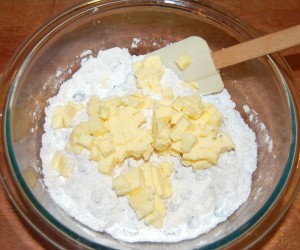
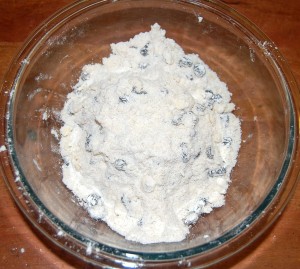
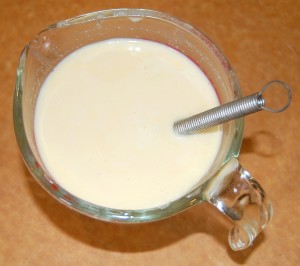
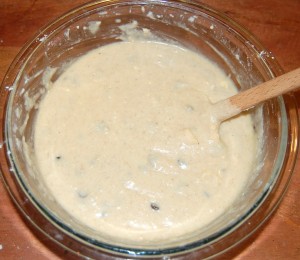
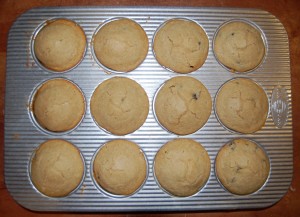
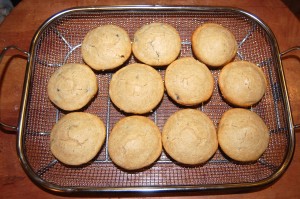
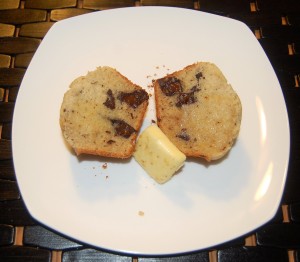
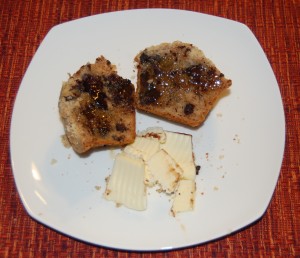
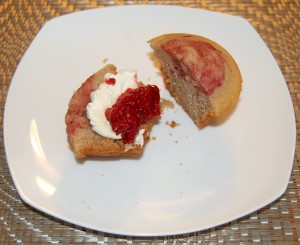
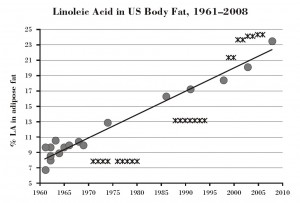
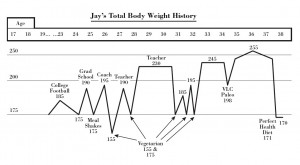




Recent Comments